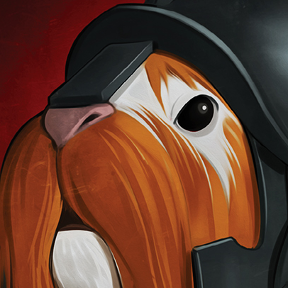Welcome to the Onshape forum! Ask questions and join in the discussions about everything Onshape.
First time visiting? Here are some places to start:- Looking for a certain topic? Check out the categories filter or use Search (upper right).
- Need support? Ask a question to our Community Support category.
- Please submit support tickets for bugs but you can request improvements in the Product Feedback category.
- Be respectful, on topic and if you see a problem, Flag it.
If you would like to contact our Community Manager personally, feel free to send a private message or an email.
Best Of
Re: New FeatureScript: Cosmetic Knurl
@zy_su to use this you will need to click the link above and add the custom feature to your toolbar. From there, you will then be able to access that tool in your own part studios.
The tool requires you to click a face, then it will automatically add lines to the face. This is for cosmetic purposes since the Knurls are added via machining and don't need to be created in the model unless you are 3D printing.
Re: Improvements to Onshape - March 13th, 2025
When you open an older doc it often pops up and says... This doc is old, update now or later..
If you want to force onshape to update a doc send it to trash and restore.
On a completely different note...
COSMETIC THREAAAAAAAADS! WOOHOOOOO
Re: Improvements to Onshape - March 13th, 2025
Sorry Euan, that may have been my "Southern Hemisphere standard" thread direction…
Actually, that video was created earlier in the week before we had a chance to address something - it is all correct now.
Re: Improvements to Onshape - March 13th, 2025
Using Polycam on my Android phone I was able to test out the new constrain feature on my favorite stress ball. As a small test, I just split out the eye portion, selected the mesh surface, and updated the tolerance to 0.4mm. 2 thumbs up!
Re: Improvements to Onshape - March 13th, 2025
My guess is that the cosmetic thread might only show on thread created with the updated version of the features (i.e. try creating a new tapped hole or external thread feature in your doc and see if it shows up on there…)
Re: Features essential for aerospace structures are missing
As you probably know, Onshape is based on the same kernel, Parasolid, as NX. In theory, anything that can be modeled in NX can be modeled in Onshape. Of course NX has decades more development and has many niche tools that Onshape doesn't. It also costs a lot more and takes an IT department to manage it. There are several aerospace companies using Onshape at the moment.
In a perfect world, I wish Onshape had more sophistication in some areas, but after 30 years of using Creo and Solidworks I refuse to use them again because Onshape solves certain pain points so much better:
- Never loosing work
- Getting new functionality every 3 weeks that other companies charge an arm and a leg for
- Having those updates be almost pain free and automatic
- Not having to worry about managing a PDM server
- Being able to add custom features, and write them
- The way that Onshape manages history, versions, branching, merging, reference updating
- The stability and uptime of Onshape on AWS
- Much more explicit control over how my top down design references work
 S1mon
S1mon
Re: Features essential for aerospace structures are missing
I wasn't able to completely understand what you're trying to build (and how), but I was able to draft up a conical isogrid pattern in a few minutes.
apparently, there's custom feature called isogrid… (custom features of onshape are awesome and often fill in the few gaps that i felt were there from NX)
I've used NX for 11 years as well, but would hate to go back now, for reasons @S1mon detailed.
sometimes you just have to find the right way to get things done…
would not be able to do this with NX. wouldn't have the custom feature, and couldn't have as easily shared my file with you…
(what version of nx are you on etc.)
Re: ARM64 Support - Snapdragon X Elite
With Onshape release 195 we believe we've resolved the selection issues on the Snapdragon X Elite GPUs. We were getting garbage data back from the tiny pick buffer we use to support selection. We've applied a work-around and have seen the issue improve. Please let us know if you find the issue is not resolved.
 Evan
Evan







